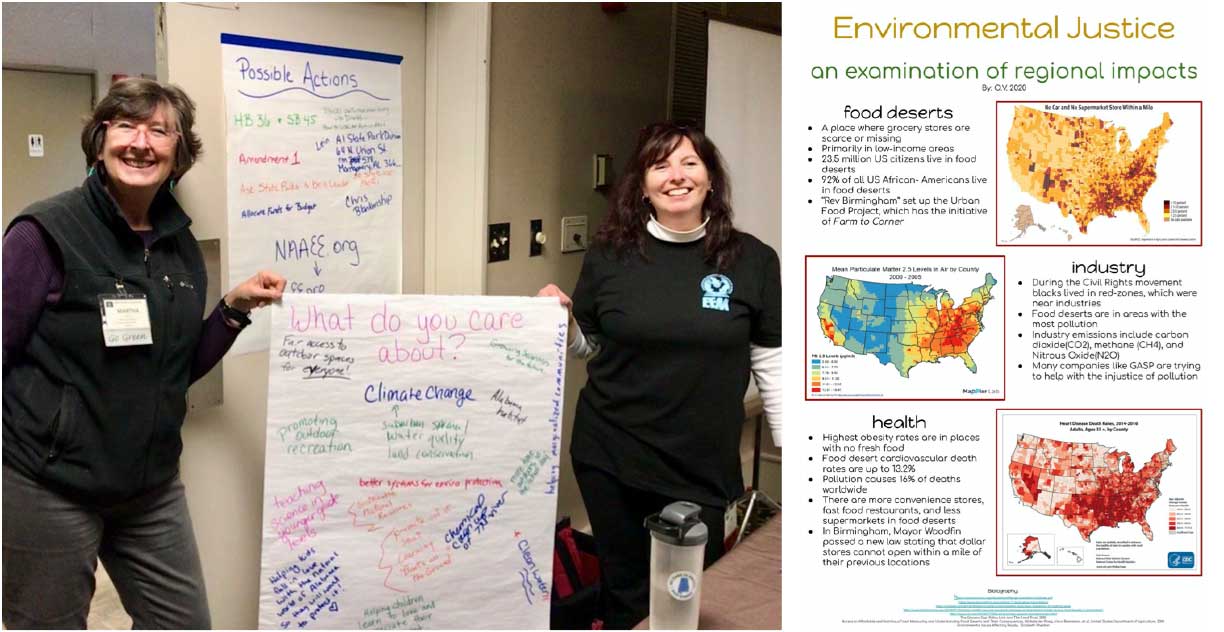 Sierra Club, Alabama Chapter is rooted in environmental education. There are many opportunities for each group around the state to share environmental knowledge and awareness with its community members. It is essential that we are engaging with diverse groups and, especially, with youth as they are our future.
Sierra Club, Alabama Chapter is rooted in environmental education. There are many opportunities for each group around the state to share environmental knowledge and awareness with its community members. It is essential that we are engaging with diverse groups and, especially, with youth as they are our future.
Here are some inspirational examples of how educators in Alabama are providing meaningful experiences for youth and others to gain knowledge, collaborate with partner groups, and take action in their environment:
“The Environmental Education Association of Alabama is comprised of educators from around Alabama who share a passion for educating our citizenry, especially our young people, on the diverse natural resources our state enjoys.” The EEAA Annual Conference took place February 27-29th at Joe Wheeler State Park. The theme of the conference was to “CELEBRATE: Planet, Place, People." https://www.eeaa.us
Unique pathways and hands-on learning encourage youth to engage with environmental issues.
Christopher Schell, teacher at Creative Montessori School in Homewood, has been partnering with GASP to incorporate air quality monitoring into the math, science, and art concepts that he delivers in his classroom. Students create graphic art materials and participate in other in-depth projects that connect air quality, particulate matter, health, and environmental justice. They also have their own air quality monitoring system at their school that they use to collect data. Christopher uses hands-on education and “honest conversations to foster environmentalism in his students.” He knows that he has to meet the educational standards set forth in the Alabama Course of Study, but invests in providing creative pathways for students to go beyond those standards. He understands the need for educators to prepare environments for students to come in and choose to learn while making their own decisions about important issues.
Many advocates are educators and ALL educators are advocates.
Educators enter the room for a session on Legislation and Education. Martha Hunter of Alabama Rivers Alliance and Kim Murray of Munford Schools have prepared an entry activity in which participants use posters on the wall to write down “what is important to you” and “what you care about” involving environmental education. Participants share comments including “climate change,” “fair access to outdoor recreation,” and “Alabama habitat.”
These educators are ready to take action. Gabbie Ehinger, an instructor of biological sciences at Huntingdon College in Montgomery, encourages that through environmental education, if we can “teach people to enjoy nature they are more likely to care about things that affect that enjoyment.” She expresses that she wants to take away “useful advocacy tools that we can take back to the classroom and relate to local issues” from the session.
Martha Hunter delivers information on engaging in advocacy on local, state, and federal levels. She refers to the interconnectedness of environment, education, and advocacy with her statement, “someone stood up and said “we need this”-and they advocated for it.”
These educators took action during the session by writing a letter to the state park encouraging that they eliminate single-use plastics. They sincerely reflected on the concepts of "being an environmental model” and “being the change you want to see.”
“Who is Sierra Club, Alabama Chapter?”
We are Education.
We are Advocacy.
We are Outings.
We are Civic Engagement.
We are protecting our environment so that we may continue to explore and enjoy to its greatest extent, for ourselves and future generations.